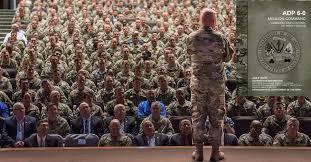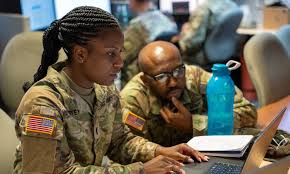Contents
- 1 Historical Context of Strategic Command
- 1.1 Core Components of Strategic Command
- 1.2 Strategic Command in Military Context
- 1.3 Strategic Command in Business Organizations
- 1.4 Technological Advancements and Strategic Command
- 1.5 Challenges Faced by Strategic Command
- 1.6 Strategic Command in Crisis Situations
- 1.7 The Future of Strategic Command
- 1.8 Conclusion
- 2 Author
Strategic Command refers to the organizational framework and leadership structure responsible for overseeing large-scale and long-term operations, particularly in military, governmental, or corporate environments. It involves planning, coordination, and execution of strategies that align with overarching objectives. Strategic Command operates at the highest level of decision-making, ensuring that all tactical and operational elements work cohesively to achieve desired outcomes.
Historical Context of Strategic Command

The concept of Strategic Command has evolved over centuries, shaped by historical events and the demands of governance, defense, and management. In military history, Strategic Command became essential during the world wars, as nations required centralized control to manage multiple theaters of operations. Leaders like Dwight D. Eisenhower in World War II exemplified the importance of a unified strategic approach, ensuring coordination among allied forces.
In a corporate context, Strategic Command emerged as organizations grew in size and complexity, necessitating a leadership structure capable of managing resources and navigating competitive landscapes.
Core Components of Strategic Command
Strategic Command comprises several interconnected components that ensure its effectiveness:
- Leadership and Vision: At the heart of Strategic Command is leadership that sets a clear vision. Leaders in this role must possess a deep understanding of the organization’s goals and the ability to inspire and guide their teams.
- Intelligence and Analysis: Strategic Command relies heavily on accurate data and analysis. This includes gathering intelligence about competitors, allies, and broader trends to make informed decisions.
- Communication and Coordination: Effective communication is critical in ensuring that all parts of the organization or operation understand and align with strategic objectives.
- Resource Management: Strategic Command oversees the allocation and optimization of resources, including personnel, technology, and finances, to support long-term goals.
- Crisis Management: Strategic Command must be prepared to address unexpected challenges. This requires flexibility and quick decision-making to mitigate risks and adapt to changing circumstances.
Strategic Command in Military Context
In military operations, Strategic Command is pivotal in ensuring national security and global stability. For instance, the United States Strategic Command (USSTRATCOM) oversees a range of critical functions, including nuclear deterrence, space operations, and cybersecurity. It plays a key role in maintaining a robust defense posture while coordinating with allied forces.
Military Strategic Command ensures that tactical operations align with broader strategic goals. This involves the integration of land, air, sea, and cyber forces to address complex security challenges. The focus is not only on defense but also on projecting power and deterring potential threats.
Strategic Command in Business Organizations

In the corporate world, Strategic Command serves as the backbone of effective management. It is the responsibility of senior executives and leadership teams to develop strategies that drive growth and innovation. Strategic Command in businesses often involves:
- Market Analysis: Understanding market trends and consumer behavior to identify opportunities and risks.
- Competitive Strategy: Developing plans to gain a competitive edge through innovation, cost leadership, or differentiation.
- Sustainability Initiatives: Integrating environmental and social considerations into business strategies to align with global priorities.
- Change Management: Leading organizations through periods of transformation, such as mergers, acquisitions, or technological shifts.
Technological Advancements and Strategic Command
Technology has significantly enhanced the capabilities of Strategic Command in various fields. Advanced tools for data analytics, artificial intelligence, and communication have transformed how strategies are developed and executed.
In military operations, technologies such as satellite systems, drones, and cybersecurity tools provide real-time intelligence, enhancing decision-making at the strategic level. Similarly, in business, digital transformation has enabled organizations to adapt to rapidly changing environments and implement strategies with greater precision.
Challenges Faced by Strategic Command
Despite its critical role, Strategic Command faces several challenges indrabet in modern contexts:
- Uncertainty and Complexity: The dynamic nature of global politics, economics, and technology requires Strategic Command to navigate high levels of uncertainty and complexity.
- Information Overload: The vast amount of data available can overwhelm decision-makers, making it difficult to extract actionable insights.
- Coordination Across Diverse Teams: Strategic Command often involves coordinating efforts across multiple departments, regions, or countries, which can lead to communication gaps and misalignment.
- Ethical Considerations: Balancing strategic objectives with ethical responsibilities can be challenging, particularly in areas such as military operations or corporate governance.
Strategic Command in Crisis Situations

During crises, Strategic Command becomes even more critical. Whether responding to natural disasters, economic downturns, or security threats, the ability to manage resources and coordinate responses effectively can mean the difference between success and failure.
For example, during the COVID-19 pandemic, governments and organizations worldwide relied on strategic command structures to manage healthcare systems, distribute vaccines, and support economic recovery. The experience highlighted the importance of preparedness, adaptability, and collaboration.
The Future of Strategic Command
The future of Strategic Command will be shaped by ongoing advancements in technology, globalization, and the need for sustainability. Key trends likely to influence Strategic Command include:
- Artificial Intelligence and Automation: AI will play an increasingly central role in data analysis, decision-making, and operational efficiency.
- Global Collaboration: As challenges such as climate change and cyber threats require global solutions, Strategic Command will need to foster greater international cooperation.
- Focus on Diversity and Inclusion: Incorporating diverse perspectives into strategic decision-making will enhance creativity and problem-solving.
- Resilience and Adaptability: The ability to adapt quickly to unforeseen circumstances will be a defining characteristic of successful Strategic Command in the future.
Conclusion
Strategic Command is an indispensable element in achieving success across military, governmental, and business domains. Its ability to align resources, coordinate efforts, and navigate complex environments makes it a cornerstone of effective leadership. As the world continues to evolve, the principles and practices of Strategic Command will remain essential in addressing the challenges and opportunities of the modern era.

